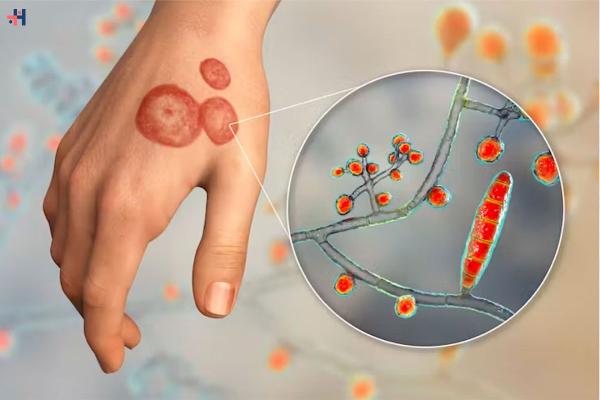 Smart Link Building – DA 50+ Backlinks with Fast Indexing!
Smart Link Building – DA 50+ Backlinks with Fast Indexing!
Strep Throat: Symptoms, Causes, and Treatment
Written by HealthCare360 » Updated on: June 17th, 2025

Strep Throat: Symptoms, Causes, and Treatment
Strep Throat: Symptoms, Causes, and Treatment | Healthcare 360 Magazine
Strep throat is a common bacterial infection that can cause significant discomfort and complications if left untreated. It’s crucial to understand the symptoms, causes, and treatment options to manage and prevent this infection effectively.
What is Strep Throat?
It is an infection of the throat and tonsils caused by group A Streptococcus bacteria. It spreads through respiratory droplets when an infected person coughs or sneezes, or through shared food or drinks. It is particularly common in children, but it can affect individuals of all ages.
Symptoms
The symptoms of strep throat can range from mild to severe and typically appear within five days of exposure to the bacteria. Common symptoms include:
Strep Throat: Symptoms, Causes, and Treatment | Healthcare 360 Magazine
Sore Throat
A sudden and severe sore throat is the most common symptom.
Painful Swallowing
Difficulty and pain while swallowing are typical signs.
Red and Swollen Tonsils
Tonsils may appear red and swollen, sometimes with white patches or streaks of pus.
Tiny Red Spots
Small red spots may appear on the roof of the mouth.
Fever
A high fever of 101°F (38.3°C) or above is common.
Swollen Lymph Nodes
Swelling and tenderness in the lymph nodes in the neck.
Headache
Headaches often accompany sore throat caused by strep.
Rash
A skin rash, known as scarlet fever, may develop in some cases.
Fatigue
General feelings of tiredness and fatigue.
Nausea or Vomiting
Particularly in younger children, nausea, vomiting, and stomach pain may occur.
Causes and Risk Factors
Strep throat is caused by the Streptococcus pyogenes bacteria, also known as group A streptococcus. Several factors can increase the risk of contracting sore throat caused by strep:
Age
It is most common in children between the ages of 5 and 15.
Close Contact
Close contact with an infected person, such as in schools, daycare centers, and households, increases the risk.
Season
It is more prevalent in late fall, winter, and early spring.
Weakened Immune System
Individuals with weakened immune systems are more susceptible to infections.
Diagnosing
Diagnosing strep throat involves a physical examination and specific tests to confirm the presence of the Streptococcus bacteria.
Physical Examination
A healthcare provider will examine the throat for signs of infection, such as redness, swelling, and white patches on the tonsils. They may also check for swollen lymph nodes.
Rapid Antigen Test
This test involves swabbing the throat and tonsils to detect antigens associated with group A strep. Results are typically available within minutes.
Throat Culture
If the rapid antigen test is negative but strep throat is still suspected, a throat culture may be performed. This involves swabbing the throat and sending the sample to a lab for further analysis. Results take longer, usually 24 to 48 hours.
Treatment Options
The primary treatment for strep throat is antibiotics, which help reduce the severity of symptoms, prevent complications, and reduce the risk of spreading the infection.
Antibiotics
Penicillin or Amoxicillin: These are the most commonly prescribed antibiotics for sore throat caused by strep.
Cephalosporins: For those allergic to penicillin, cephalosporins such as cephalexin may be used.
Macrolides: Antibiotics like azithromycin or clarithromycin may be prescribed for penicillin-allergic individuals.
Symptomatic Relief
Strep Throat: Symptoms, Causes, and Treatment | Healthcare 360 Magazine
Over-the-Counter Pain Relievers: Medications such as acetaminophen or ibuprofen can help relieve throat pain and reduce fever.
Throat Lozenges and Sprays: These can provide temporary relief from sore throat symptoms.
Hydration and Rest: Drinking plenty of fluids and getting adequate rest are crucial for recovery.
Warm Saltwater Gargles: Gargling with warm salt water can soothe the throat and reduce swelling.
Complications
If left untreated, strep throat can lead to several complications, some of which can be serious:
Rheumatic Fever
An inflammatory disease that can affect the heart, joints, skin, and brain.
Post-Streptococcal Glomerulonephritis
A kidney disease that can develop after a strep infection.
Scarlet Fever
Characterized by a red rash that spreads over most of the body.
Peritonsillar Abscess
A collection of pus near the tonsils.
Sinus and Ear Infections
Strep bacteria can spread to the sinuses and middle ear, causing infections.
Preventing
Preventing strep throat involves good hygiene practices and avoiding close contact with infected individuals. Here are some tips to reduce the risk:
Wash Hands Regularly
Frequent hand washing with soap and water is essential, especially after coughing, sneezing, or touching your face.
Avoid Sharing Personal Items
Do not share utensils, drinking glasses, or other personal items with others.
Cover Your Mouth
Always cover your mouth and nose with a tissue or your elbow when coughing or sneezing.
Stay Home When Sick
If you or your child has strep throat, stay home from work, school, or daycare until antibiotics have been taken for at least 24 hours and fever has subsided.
Clean and Disinfect
Regularly clean and disinfect frequently-touched surfaces, such as doorknobs, light switches, and remote controls.
Living with Strep Throat
Dealing with strep throat can be uncomfortable, but following proper treatment and self-care can lead to a quick recovery. Here are some tips for managing it at home:
Strep Throat: Symptoms, Causes, and Treatment | Healthcare 360 Magazine
Follow the Full Course of Antibiotics
Even if you start to feel better, it’s essential to complete the entire course of antibiotics to ensure the infection is fully eradicated.
Stay Hydrated
Drink plenty of fluids to keep your throat moist and prevent dehydration.
Eat Soothing Foods
Soft foods, warm broths, and cold treats like ice cream or popsicles can soothe a sore throat.
Rest
Give your body time to heal by getting plenty of rest.
Monitor Symptoms
Keep an eye on your symptoms and seek medical attention if they worsen or if you develop new symptoms, such as difficulty breathing or swallowing.
Conclusion
Sore throat caused by strep is a common bacterial infection that can cause significant discomfort and lead to complications if not treated properly. Recognizing the symptoms, seeking prompt medical attention, and adhering to the prescribed treatment plan are crucial steps in managing the infection. By practicing good hygiene and taking preventive measures, you can reduce the risk of contracting and spreading strep throat. If you or a loved one is experiencing symptoms of strep throat, consult a healthcare provider for an accurate diagnosis and appropriate treatment.
References
Centers for Disease Control and Prevention (CDC)
Mayo Clinic
American Academy of Pediatrics
Understanding and managing strep throat effectively can lead to a swift recovery and prevent potential complications, ensuring better health and well-being for you and your family.
Find practical solutions to common challenges through our insightful articles on Healthcare 360 Magazine
Note: IndiBlogHub features both user-submitted and editorial content. We do not verify third-party contributions. Read our Disclaimer and Privacy Policyfor details.
Copyright © 2019-2025 IndiBlogHub.com. All rights reserved. Hosted on DigitalOcean for fast, reliable performance.

















